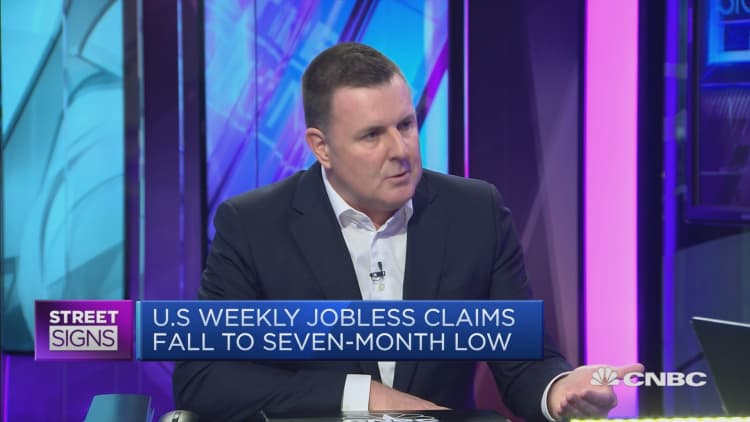The Federal Reserve could be launching another round of money-printing in the next few weeks as problems in the overnight lending markets reemerge and force the central bank into more aggressive action, according to a Credit Suisse analysis.
A fourth version of quantitative easing — often referred to as "money-printing" for the way the Fed uses digitally created money to buy bonds from big financial institutions — would be needed by year's end to bridge a funding gap as banks scramble for scarce reserves, Zoltan Pozsar, Credit Suisse's managing director for investment strategy and research, said in a note to clients.
"If we're right about funding stresses, the Fed will be doing 'QE4' by year-end," Pozsar wrote. "Treasury yields can spike into year-end, and the Fed will have to shift from buying bills to buying what's on sale – coupons."

That would mean a shift from purchasing short-term Treasury debt and expanding into longer duration and more aggressive balance sheet expansion.
The Fed is in the midst of a buying T-bills in a process that it has insisted is not QE but instead an effort to keep its benchmark overnight funds rate within the 1.5%-1.75% target range. In addition to the outright purchases, the central bank is conducting daily repurchase operations to stabilize the market.
All of those efforts stem from mid-September tumult in the repo market, the place where banks go to get overnight funding critical to their operations. A Sept. 17 spike in rates amplified funding issues that Pozsar said are not going away.
"The Fed's liquidity operations have not been sufficient to relax the constraints banks will face in the upcoming year-end turn," he said, adding that investors have become complacent after an initial flare-up in 2018 turned out to be "benign" and as "repo rates have been trading normally since the September blowout" and amid the Fed's efforts to keep reserves plenty.
"But these facts are less relevant than they seem," Pozsar said.
In fact, he warned of even potentially more dire consequences should market dislocations and another spike in rates upset the carry trades institutions employ, where lower-yielding currencies are used to buy those with higher yields, with investors pocketing the difference.
"If carry makes the world go 'round, and reserves make carry possible … the day we run out of reserves would be the day when the world would stop spinning." Pozsar said. "No, this is not an overstatement."
Diagnosing the causes
The problems he identified are twofold — a Fed that raised rates too much and cut its bond holdings and balance sheet too quickly, coming at the same time as Basel III international banking guidelines made capital requirements more stringent.
Before the balance sheet rundown, the Fed had been running what it considered an "ample reserves" regime, where reserves a year ago had been around $1.8 trillion. That number dropped close to $1.4 trillion in September, and the Fed has wrestled since with what is the right number.
Pozsar specifically described the potential QE4 process as helping "through the backdoor," with the Fed buying back the bonds that banks were forced to buy during the balance sheet rundown "and giving back the reserves they gave up in the process."
Poszar said the concept of excess reserves is now "an oxymoron" due to the new capital requirements.
His analysis, however, is fairly contrarian.
While there remain concerns about how the Fed calibrates the right level of reserves, most fixed income experts think the central bank's market operations have kept the market running smoothly. Indeed, the funds rate for the past month has been trading at 1.55%, which is near the bottom end of the target range. The Fed usually is satisfied if the rate trades around the midpoint, which would be about 1.62%.
Still, he points out that since the Fed reversed its balance sheet contraction and started buying Treasury notes, actual reserves have grown little. The Fed's balance sheet since mid-September has expanded by nearly $300 billion to $4.1 trillion; reserves in that time have expanded by about $110 billion.
A Bank for International Settlements analysis of the issue, released Monday, also warned of future funding problems and said the Fed's diagnosis of the September tumult was incomplete. Central bank officials have attributed the upset to a surge of corporate tax payments and an unusually large Treasury auction settlement as sucking capital out of the system.
However, the BIS said hedge funds and big banks contributed as well, with the former placing high capital demands on the market while the latter did not provide liquidity as the market became stressed.
The BIS did note that the Fed's operations have "calmed markets."



